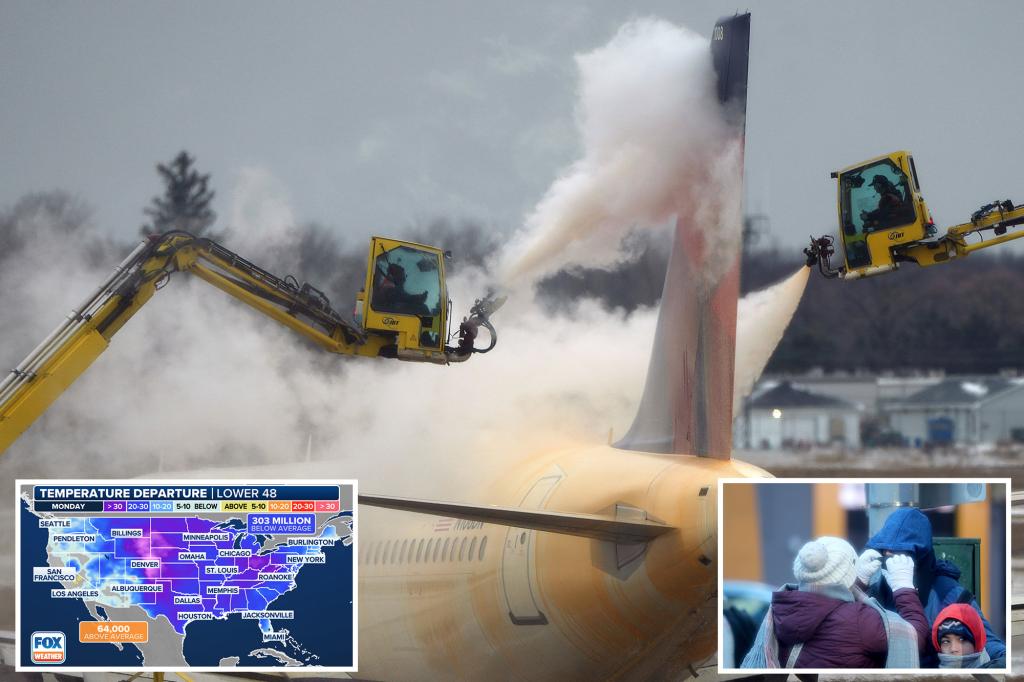A brief respite of milder temperatures is expected across most of the U.S. on Thursday, with temperatures soaring up to 20 degrees above average in some regions. This temporary warm-up, however, precedes a dramatic plunge into frigid conditions as a disruptive polar vortex prepares to sweep across the nation starting this weekend. This southward shift of the polar vortex will usher in an arctic blast, sending temperatures plummeting below freezing for a vast majority of the country, including areas typically accustomed to milder winters. The stark contrast in temperatures is exemplified by Minneapolis, where a Thursday high of 34 degrees Fahrenheit is predicted to plummet to a bone-chilling -3 degrees by Sunday. This dramatic shift underscores the intensity and rapid onset of the impending cold snap. This arctic intrusion is not an ordinary cold front; it signifies a significant weather event impacting nearly the entire continental U.S., even reaching as far south as the Gulf Coast. Snowbirds seeking refuge from winter’s chill in the South will find no escape from this pervasive cold wave.
The approaching polar vortex promises a widespread and intense cold snap, with over 300 million Americans expected to experience below-average temperatures by Monday. The temperature drop will be drastic, with some areas experiencing a 45-degree plunge below average. This extreme cold will result in sub-zero temperatures across at least 20 states, spanning from the Plains to the Great Lakes and extending into the interior Northeast. The frigid air mass will blanket nearly the entire Lower 48 states, encompassing over 80% of the population and plunging temperatures below freezing. Even the Deep South will feel the icy grip of this arctic blast, with only the southernmost tip of Florida escaping the sub-freezing temperatures. This widespread and significant cold event underscores the potent impact of the disrupted polar vortex.
While a slight moderation in temperatures may offer a brief reprieve mid-next week, the overarching weather pattern remains conducive to further outbreaks of brutally cold air towards the end of January. With monthly temperatures already averaging 5-10 degrees below normal, the upcoming cold snap virtually guarantees that numerous locations in the eastern U.S. will experience their coldest January in years. This prolonged period of below-average temperatures highlights the significant impact of this persistent cold pattern. Furthermore, the FOX Forecast Center warns of the potential for even more extreme cold outbreaks in the near future.
The severity of the impending cold brings with it life-threatening conditions, particularly for vulnerable populations and those unprepared for such extreme temperatures. Cities like Atlanta, unaccustomed to such frigid conditions, will face a significant challenge as temperatures plummet into the teens by Monday morning. This unexpected cold snap necessitates preparation and precautions to mitigate the risks associated with extreme cold. The wind chill factor further exacerbates the dangers, making it feel like -50 degrees Fahrenheit in some parts of the country by Monday morning. This dangerous combination of low temperatures and strong winds poses a significant threat of hypothermia and frostbite.
The extreme cold also poses a significant challenge for areas still recovering from recent natural disasters. For instance, residents of western North Carolina and eastern Tennessee, still reeling from the devastation wrought by Hurricane Helene, face additional hardship as they grapple with the impending arctic blast. Many in these areas remain without homes, making them particularly vulnerable to the life-threatening cold. The combination of displacement and extreme weather creates a dire situation for these communities.
The impending arctic blast serves as a stark reminder of the importance of preparedness in the face of extreme weather. Heeding weather advisories, ensuring adequate heating, and taking precautions against frostbite and hypothermia are crucial for navigating this period of extreme cold. Checking on vulnerable neighbors and family members is also essential, especially in areas experiencing power outages or lacking proper insulation. The widespread nature of this cold snap underscores the need for collective awareness and community support to ensure the safety and well-being of everyone. Staying informed about weather updates and taking appropriate precautions will be crucial for minimizing the risks associated with this significant cold event.

